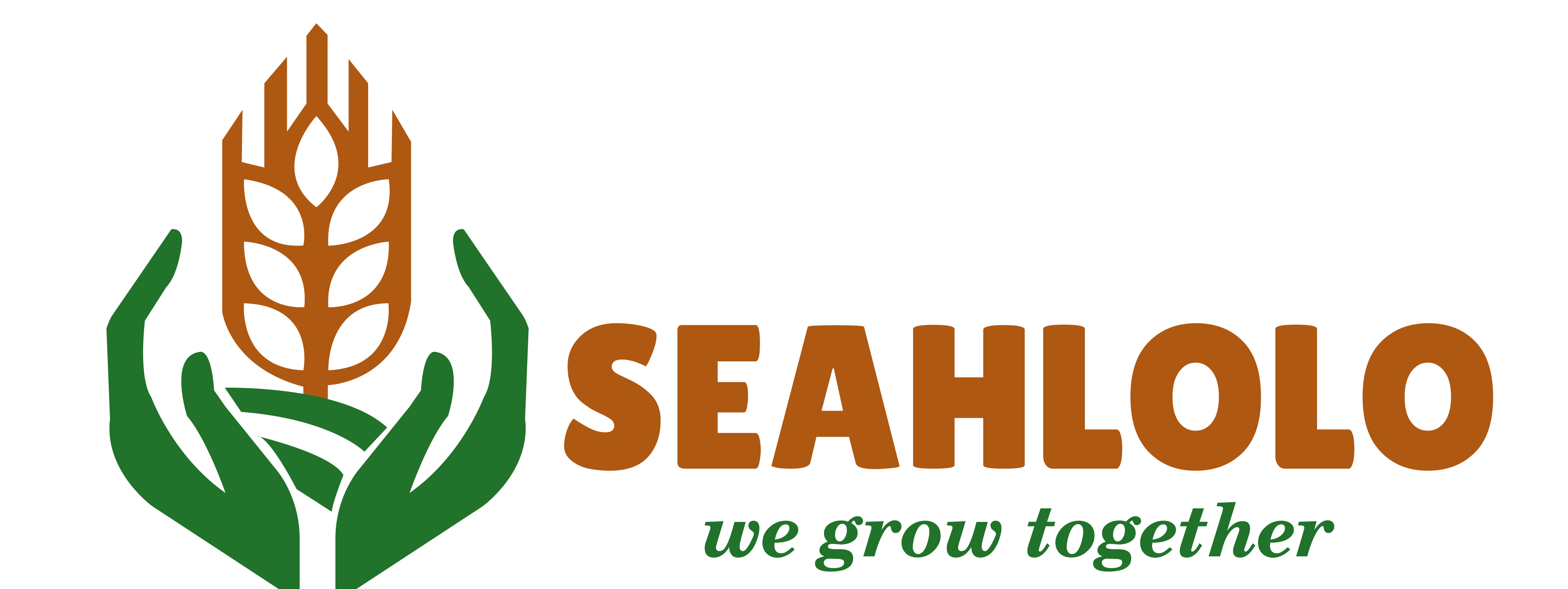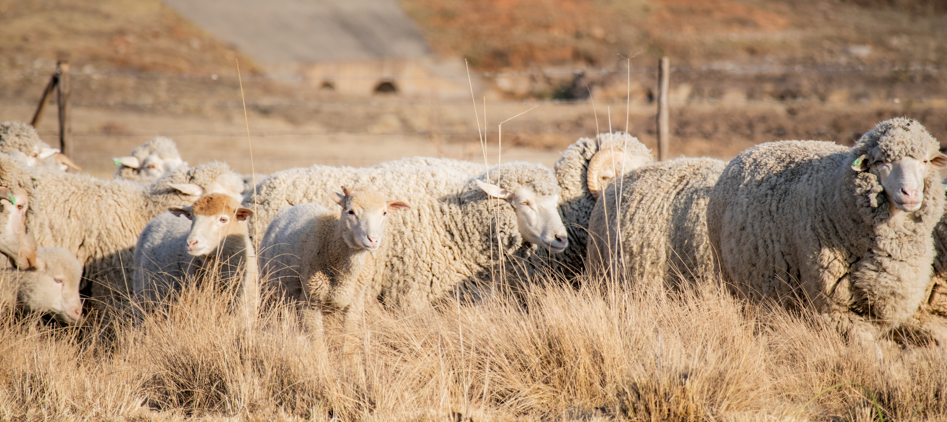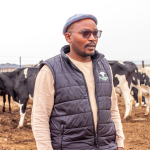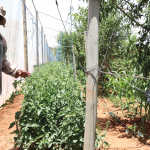![]()
By Seahlolo Reporter
Ntoi Beef Farm is boasting a fleet of 74 improved quality sheep thanks to the adherence to the SADP II’s support.
Owned by Ntoi Mashakhela of Ha Mojapele, Leribe, a determined farmer whose journey into sheep farming began unexpectedly, Ntoi Beef Farm started with 34 low-quality sheep.
Back in 2015, Ntoi was running a dog breeding and farm feeds business, which he used to seed his next venture, sheep farming.
At the time, resources were limited and expansion was a far-fetched possibility.
“We did not have a stable or even enough water supply for the sheep, the most vital component of any farm activities. 34 sheep meant my dreams were valid, but the journey towards success was blurred,” recalls Mashakhela.
Understanding the importance of a legal registration, Mashakhela formalised his farm by establishing Ntoi Beef Farm and in 2022, his fortunes changed when he became a beneficiary of the Smallholder Agriculture Development Project (SADP II).
Through the grant, his farm received support to bore water, build a professionally designed stable, and introduced genetically improved sheep breeds.
“SADP helped us with water, and the ball started rolling.”
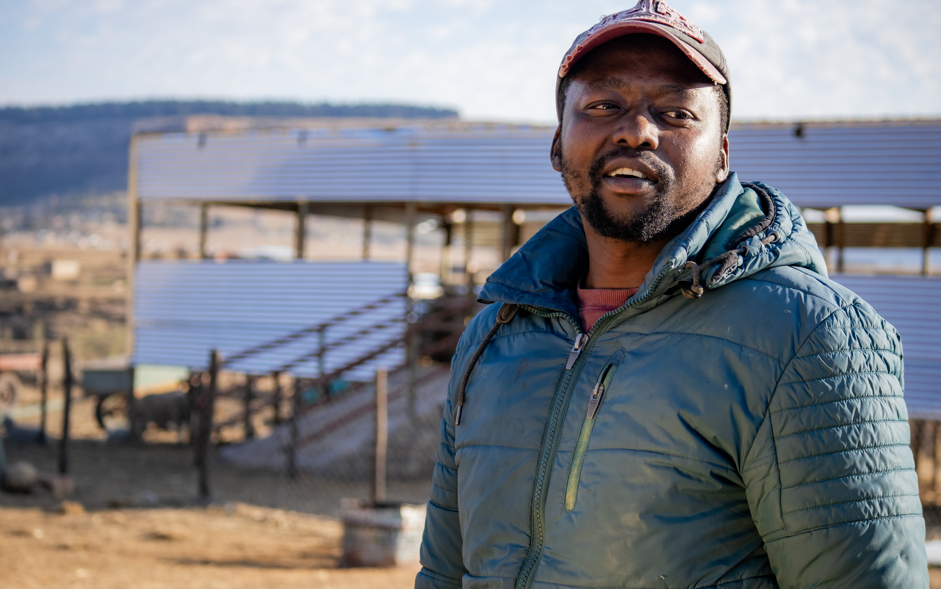
“Part of the grant was a stable, genetics which greatly advanced our sheep quality. We are boasting the best quality wool,” he says with pride.
Mashakhela had always aspired to become a ram breeder, but before the grant, his flock was made up of low-quality sheep bought randomly from different local sellers.
“I knew I needed to start with a clear vision. It took me all I have to find possibilities,” he says, noting the SADP support enabled him to introduce strong genetic stock suited for sustainable ram breeding, a critical step toward his dream.
“I am now a proud Ram Breeder and employ two full-time people,” he beams.
Mashakhela recounts first learning about SADP at a community gathering in 2020, where the project’s application process and requirements were explained.
Unlike some applicants, his first application was successful, and he was a grantee in 2022.
“The grant was clear with my milestones from the onset. The first round of benefits was water boring, then came the stable, and then I received 31 sheep and a ram, increasing my flock significantly.”
Ntoi Beef Farm’s core business is breeding, with Mashakhela noting that in a year, the farm breeds over 30 sheep for both farm expansion and market needs.
“We also sell wool, rams and improved sheep to other farmers who will also sell wool. We then have a meat production breeding wing of the business where those in the industry purchase calves. We then further dispose of old sheep, selling to those who are in the culinary sector,” he notes.
“We have just signed for the second phase, which will provide even more sheep towards my expansion,” he explains.
While hailing access to water at Ntoi Beef farm, the improved and professionally built stable, Mashakhela says, has been a game-changer.
“It is professionally built to prevent disease. The floor system ensures sheep don’t rest on their waste, which reduces sickness,” he says.
Ntoi Farm was also granted a guardhouse to secure the high-value breeds.
“The genes we now have in the farm require serious protection. The guard house not only protects the flock but also ensures the welfare of the guard himself.”
Like many smallholder farms, Ntoi Beef Farm struggled with disease outbreaks before SADP II’s intervention, which threatened the health of his flock and the sustainability of the business.
“We had a lot of diseases, but with workshops coordinated by SADP II for wool farmers, we have been able to manage the farm better. Now, diseases no longer shock the farm,” he notes.
He explained that the said workshops bring merino farmers, extension workers, and beneficiaries together to share knowledge and practical skills.
For Mashakhela, the networking has been invaluable because it has strengthened not just his farm but also his outlook as a livestock entrepreneur.
Realising the growing demand for sheep, both for meat and wool, Mashakhela strategically shifted from dog breeding to sheep farming and says it sees sheep as “one sustainable commodity for good business.”
Inspired by SADP II’s guidance, he has even started planting grains for his flock, ensuring feed security and reducing costs.
“The SADP II project motivated me to take full control of my value chain and ensure that my farm is able to produce all that is needed to serve a market. I am still learning and growing, especially in meeting market demand, but I can now see a future where my farm continues to expand.
“I have started growing feed for the flock to ensure I live up to the advice from the experts,” he says with determination.
Sponsored by

